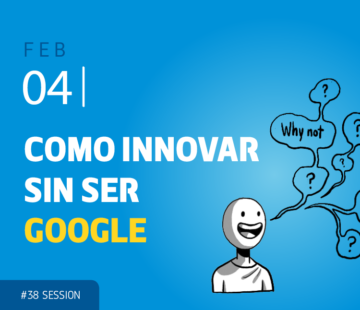Efficient teamwork and collaboration is becoming a Science

Accomplishing efficient and productive collaboration could be considered an Art. But we should also approach collaboration as a Science as new research and empirical discoveries are realized in areas such as neuropsychology, human behavior or group dynamics.
A more scientist approach to collaboration can teach us what works and what doesn’t work to improve the output of different players working together with a common goal. The “science of collaboration” can help leaders to better design, manage and evaluate cooperation. It can also improve education and training in managing teamwork as this capability become an increasingly necessary organizational and managerial skill. A more rigorous evidence-based approach to group efforts would certainly back the case for collaboration between and within businesses and organizations.
A recently published article in Harvard Business Review represents an interesting example of the kind of useful and practical insights that research on a new “science of team chemistry” can deliver. The article is the result of a research carried out by the social-personality psychologist Suzanne M. Johnson, and the national managing director of Deloitte Greenhouse experiences Kim Christfort.
Both were involved in the creation of a system used by Deloitte called Business Chemistry that included, among other resources, consulting biological anthropologist specialized on brain chemistry on romantic relationships, or asking molecular biologist about the use of statistical models used for genetic population analysis. Expressly designed for using it in a business context, Business Chemistry uses the latest analytics technologies to reveal four scientifically based patterns of behavior. As described by the authors of the HBR’s article, those four psychologic and behavioral profiles are:
Pioneers: They believe risks are worth taking and that it’s fine to go with your gut. Their focus is big-picture. They’re drawn to bold new ideas and creative approaches. They spark energy and imagination on their teams and they value possibilities,
Guardians: They are pragmatic, and they hesitate to embrace risk. Data and facts are baseline requirements for them, and details matter. Guardians think it makes sense to learn from the past. They bring order and rigor to the group and they value stability.
Drivers: Getting results and winning count most. Drivers tend to view issues as black-and-white and tackle problems head on, armed with logic and data. They generate momentum and value challenge.
Integrators: Integrators tend to believe that most things are relative. They’re diplomatic and focused on gaining consensus. Relationships and responsibility to the group are paramount.
It’s not about the ingredients but about how to mix them
Of course, those are not assumed to be exclusive traits. We are all supposed to be a unique combination of all four patterns, though according to the system creators most people strongly associate with one or two patterns that characterize their business behaviors.
The system was designed to provide insights about individuals and teams based on observable traits and preferences. Since implemented, the assessment proposed by Deloitte has been completed by 190,000 people, and follow-up studies have been conducted to determine how each work style responds to stress, the conditions under which the various styles thrive, and other factors that can inform how to manage the styles effectively.
Suzanne M. Johnson and Kim Christfort suggest that if organizations aren’t getting the performance they need from group efforts is not due to the team members that are part of them but to leaders failing to manage effectively diverse work styles and psychologic profiles. They consider cognitive diversity brings important benefits, but if not managed properly it can also be a source of tensions and misunderstandings. For instance, a Guardian would likely use detailed plan exposed line by line that may feel like a forced march to a Pioneer who prefers riffing about ideas without any agenda or structure in a way that an organized Guardian would consider an impractical mess.
Differences in how individuals think and contribute to the group make more likely to generate innovative ideas when addressing business challenges and opportunities, but it can also create important hurdles for the group performance. For instance, an Integrator could be avoiding bringing topics up because it always leads to unpleasant arguments.
Some practical insights
What to do then? How can a team leader leverage the findings of Suzanne M. Johnson and Kim Christfort to improve collaboration efficiency? Next are some of the insights and recommendations you can find in HBR article.
- Develop a better understanding of the team. Identify the differing styles of your team members and understand what makes each individual tick. Share and brainstorm on this self-knowledge so everyone can better understand their differences.
- Educate on the potential power in their differences. Collectively look for strategies for accommodating individuals’ differing styles and on taking advantage of the value that each brings.
- Generate productive friction. It’s not easy and requires time and effort, but pulling opposites styles closer can balance each other out and create very positive synergies. Complementary partnerships on teams may work by a mutual recognition of each other strengths and weaknesses, serenely allowing each to take care of the tasks they are is good at (and maybe other members and styles hate or do not feel so easy being responsible for).
- Avoid cognitive bias. If in a group just a few team members belong to a particular behavior profile, it’s often more effective to focus on styles that are underrepresented. A majority of Drivers, Integrators, Guardians or Pioneers create a cognitive bias that should be avoided. Leaders should encourage members in the minority profile to speak up early to give them a chance to influence the direction of the conversation before a more represented bias takes root.
Beyond more general ways, the article also includes type-specific tactics to elevate minority perspectives on teams for each of the four different behavior styles. But this post is already becoming too long so, if interested, follow the link..
